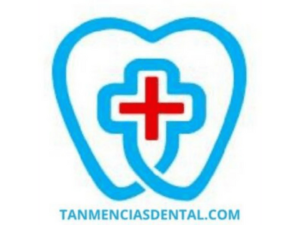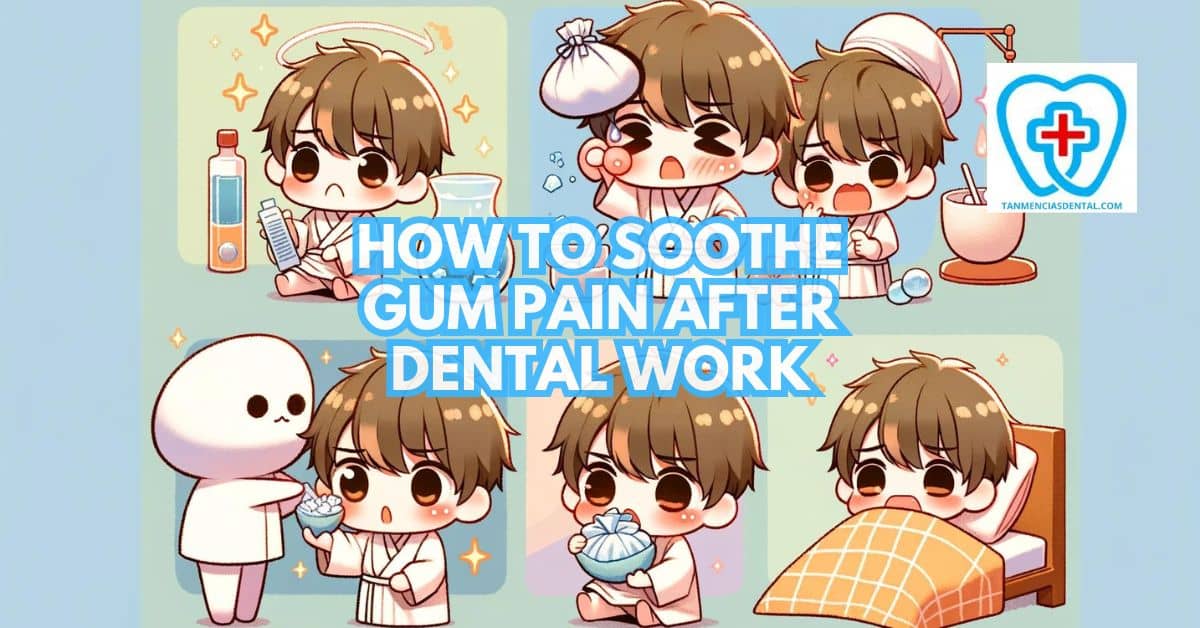Gum pain after dental work is a common issue that many patients face.
It can make simple activities like eating and speaking uncomfortable.
This guide offers simple and clear tips to help ease that pain and speed up healing.
By learning how to manage your discomfort, you can feel more at ease during the recovery process.
Following these steps can help you get back to your normal routine faster.
1. Is Gum Pain After Dental Work Normal? Understanding Post-Procedure Discomfort
Experiencing gum pain after dental procedures is generally normal and occurs because dental work often involves some level of tissue manipulation.
This type of pain can range from mild soreness to moderate discomfort, depending on the specific treatment and your personal pain tolerance.
For example, getting a tooth filling or cleaning beneath the gumline may temporarily irritate the surrounding gum tissue.
The pain typically improves within a few days as the gums heal, and using over-the-counter pain relievers or rinsing with warm salt water can help ease the discomfort.
However, if you notice severe pain after a dental procedure, swelling, or unusual discharge, these could be signs of infection or other complications that require immediate attention from your dentist.
It’s important to monitor the type of pain you experience and how long it lasts, as prolonged or worsening pain may indicate a more serious issue.
Always follow your dentist’s aftercare instructions carefully, as proper care can significantly reduce the risk of persistent gum pain after dental work.
🦷 Should You Brush Before Whitening Strips? Maximize Results
2. The Why Behind the Ouch: Common Causes of Gum Pain After Dental Work
Gum pain after dental work can stem from various causes.
These include trauma to the gum tissue, inflammation, and sensitivity due to the procedure.
Dental treatments like extractions, fillings, and cleanings often involve manipulation of the gums.
This can lead to temporary pain and swelling.
Understanding these causes helps in effectively managing and reducing discomfort.
🦷 Can Braces Close Gaps in Front Teeth for Adults?
3. Taming the Throb: Over-the-Counter Medications for Gum Pain Relief
Over-the-counter (OTC) pain relievers are a convenient and effective way to manage gum pain caused by various dental issues.
Medications like ibuprofen help reduce inflammation, while acetaminophen focuses on relieving the discomfort you may experience from conditions like a cavity or gum irritation.
When using these medications, it’s important to carefully follow the dosage instructions on the package to avoid side effects, such as stomach upset or liver damage.
For added relief, combining OTC medications with home remedies, like applying a cold compress or rinsing with warm salt water, can be very helpful.
If the pain persists or worsens, or if you suspect an infection, it may be necessary to see your dentist for further treatment, which could include a prescription antibiotic.
An antibiotic may be recommended in cases where an infection is present to stop the spread of bacteria and promote healing.
Always consult your dentist or healthcare provider if you’re unsure which OTC medication is best for your specific situation.
🦷 Celebrating Dentist Day and Oral Health
4. Easing Gum Pain with Topical Anesthetic Gels
Topical anesthetic gels can calm sore gums after dental work.
You apply the gel directly to the gum areas that hurt.
This method numbs the gums so you feel less pain quickly.
The gel often contains benzocaine, which provides fast, temporary relief.
Using these gels along with other care tips can help your gums heal more comfortably.
🦷 Is It Time for Braces to Close Gaps in Teeth?

5. When OTC Won’t Cut It: Exploring Prescription Pain Medication Options
Sometimes, over-the-counter medications may not be enough to relieve severe gum pain, especially after procedures like a root canal or oral surgery.
In these cases, your dentist might prescribe stronger painkillers, such as opioids or other prescription-strength medications, to help you manage the discomfort.
These medications are formulated to address intense pain that OTC options cannot adequately control, but they should be used with caution and only as directed.
Improper use of prescription painkillers can lead to side effects like drowsiness, nausea, or even dependency, so it’s important to follow your dentist’s instructions carefully.
Pain from procedures involving sensitive areas, like the removal of a cavity or stitches in the gums, can sometimes feel unbearable without this level of relief.
If your pain does not improve or worsens despite using prescription medication, it could indicate a complication, such as an infection or a dislodged blood clot in the case of oral surgery.
Always notify your dentist immediately if this occurs so they can reassess your condition and provide the necessary treatment.
🦷 Whitening Teeth After Braces for a Brighter Smile
6. The Healing Rinse: How Saltwater Can Soothe Your Sore Gums
A saltwater rinse is a simple yet effective remedy for gum pain.
Mix a teaspoon of salt in a glass of warm water, and rinse your mouth gently.
This solution helps reduce inflammation and promote healing by keeping the area clean.
Use this rinse several times a day, especially after meals, to alleviate discomfort.
Avoid using mouthwash with alcohol, as they can further irritate your gums.
🦷 Brush Before or After Whitening Strips?
7. Cold Comfort: Using Compresses to Reduce Swelling and Discomfort
Cold compresses can help reduce swelling and numb the pain in your gums.
Wrap an ice pack or a bag of frozen peas in a cloth and apply it to the outside of your face near the affected area.
Hold the compress in place for 15-20 minutes, then remove it for the same amount of time before reapplying.
Repeat this process several times a day for the best results.
This method is especially effective within the first 48 hours after dental work.
🦷 How Dentists and Hygienists Collaborate in Oral Care
8. Brushing and Flossing After Dental Work: Striking the Balance Between Clean and Careful
Maintaining good oral hygiene is crucial after dental work, but it requires a gentle approach.
Use a soft-bristled toothbrush to clean your teeth without aggravating the sore areas.
Avoid vigorous brushing and focus on gentle, circular motions.
When flossing, be careful not to snap the floss into your gums; instead, slide it gently between your teeth.
Proper oral care helps prevent infection and supports faster healing.
🦷 Is Bonding the Best Option for a Chipped Tooth?
9. Dietary Do’s and Don’ts: What to Eat (and Avoid) for Faster Gum Healing
Your diet plays a crucial role in gum healing after dental work.
Stick to soft foods like yogurt, mashed potatoes, and scrambled eggs to avoid irritating your gums.
Avoid hard, crunchy, or sticky foods that can cause further damage and pain.
Spicy and acidic foods should also be avoided, as they can exacerbate discomfort.
Staying hydrated by drinking plenty of water can help keep your mouth clean and aid in the healing process.
🦷 Can You Brush Without Toothpaste?
10. Rest and Recuperation: How Relaxation Promotes Healing After Dental Work
Rest is essential for recovery after dental procedures.
Avoid strenuous activities and take time to relax, allowing your body to focus on healing.
Adequate sleep and relaxation can reduce stress, which in turn promotes faster healing.
Creating a calm environment and managing stress through activities like reading or listening to music can be beneficial.
Giving your body the rest it needs helps minimize pain and speed up recovery.
🦷 Benefits of Bonding Chipped Front Teeth for a Smile Makeover
11. Knowing When to Call Your Dentist: Warning Signs of Potential Complications
It’s important to recognize when gum pain might indicate a more serious issue.
If you experience excessive swelling, severe or persistent pain, or signs of infection like fever or pus, contact your dentist immediately.
Prolonged bleeding or an unpleasant taste in your mouth can also be warning signs.
Early intervention can prevent complications and ensure proper healing.
Always err on the side of caution and seek professional advice if you’re unsure.
🦷 Marikina City Dental Services
👨⚕️ Conclusion
Managing gum pain after dental work involves a combination of proper care and timely interventions.
By following these tips, you can effectively soothe discomfort and promote healing.
Keep in regular contact with your dentist and report any unusual symptoms.
A proactive approach to post-procedure care will help you recover more comfortably and quickly.
With the right care, you’ll be back to your normal routine in no time.
😊 Self-Promotion
At Tan-Mencias Dental Clinic in Parang, Marikina City, we are dedicated to providing top-notch dental care in a friendly and welcoming environment.
Whether you have questions, need an appointment, or just want to know more about our services, we’re here for you!
You can easily reach us by calling 9171451074, sending a message through our Facebook page, or using the contact form on our website.
Our team is always ready to help you achieve a healthy, beautiful smile.
Visit us and experience the exceptional care that sets us apart!

